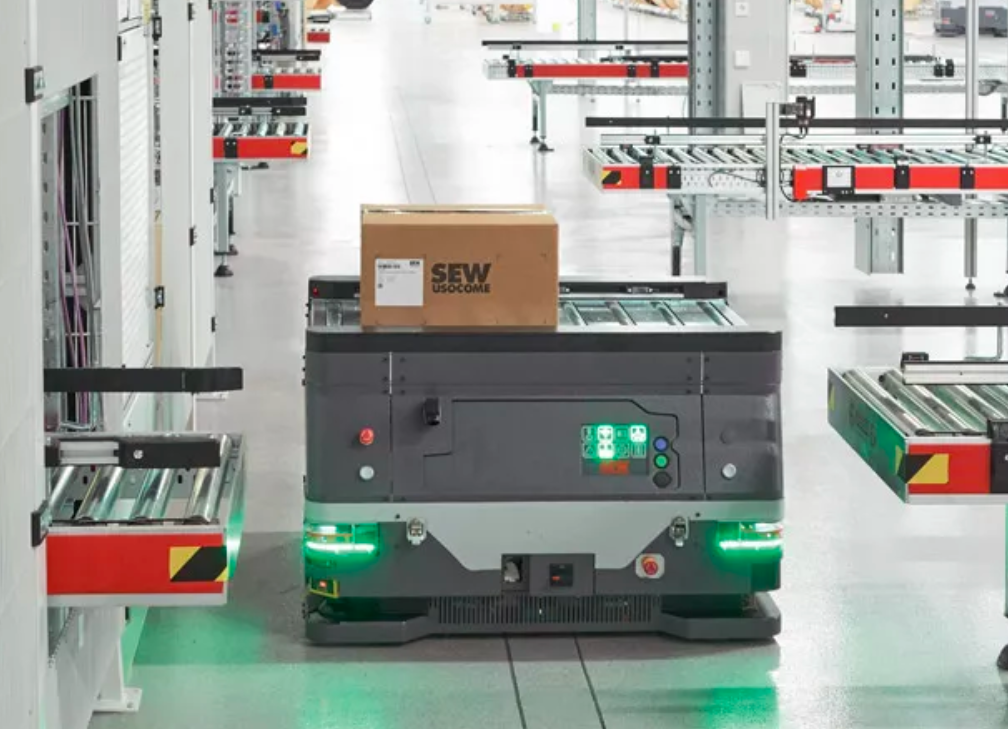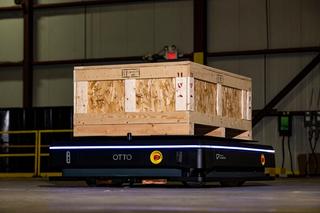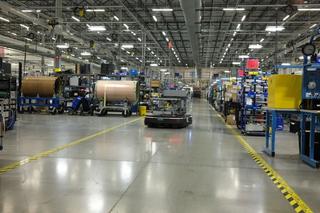Blog
A guide to VDA5050: The industry-changing interoperability standard for autonomous mobile robot integrations

As autonomous mobile robots (AMRs) continue to lead the market as the industry standard for material handling automation, interoperability has emerged as the next frontier for innovation. Customers are seeking greater flexibility and lower integration costs as they expand their automation capabilities across their facilities.
For facilities with existing fleets of automated guided vehicles (AGVs), the addition of innovative AMR technology raises questions about how different systems will interact. Manufacturers will be faced with critical questions, including:
- How will the dissimilar material handling automations systems interact with each other without compromising on throughput and safety?
- How will the AMRs and AGVs navigate intersections?
- How can mission generation become more centralized to improve the overall efficiency of your facility?
Fortunately, the VDA5050 standard has been developed to address these questions and more. By adopting the VDA5050 standard, facilities can integrate AMRs into their existing automation infrastructure with greater ease and efficiency, while simultaneously reducing costs associated with custom integrations.
What is VDA5050?
VDA5050 is an interoperability standard created in cooperation between the Verband der Automobilindustrie e.V. and Verband Deutscher Maschinen-und Anlagenbau e.V. for AGV systems. VDA represents the German automotive industry and VDMA represents the German mechanical engineering industry. While the VDA5050 standard was developed by the German Association of the Automotive Industry (VDA), it has gained international recognition as a leading standard for AGVs and now AMRs as well.
The objective of the interface is to simplify the connection of new vehicles to an existing master control and to enable parallel operation with AGV[s] from different manufacturers and conventional systems (inventory systems) in the same working environment.
VDA5050 standard
Essentially, the VDA5050 standard establishes a common interface among multiple AGV and AMR providers. It defines a set of requirements and guidelines for AGV and AMR systems in terms of safety, performance and communication, which ensures that different systems and devices can work together effectively.
The video below demonstrates the standard in action. In the video, a VDA5050-compliant AMR, OTTO 100, is remotely controlled by a third-party controller from InOrbit. In order to reduce disruption to traffic flow, the AMR is instructed to temporarily halt via a VDA5050 command and is soon released to resume its task when the AGV is clear of the aisle.
Why does VDA5050 matter?
The VDA5050 standard is a crucial element of automation that can transform the way AMR solutions are designed, integrated and operated, offering a range of benefits to manufacturers looking to adopt automation:
- Reduced cost of integration: VDA5050 allows customers to select and combine the best products and solutions from different vendors, knowing the technologies will be able to communicate seamlessly without requiring custom integration work. This helps reduce costs and improve flexibility.
- Improved safety: The system defines safety requirements for AGV and AMR systems, which ensures safe operations and reduces the risk of accidents or injuries in the production environment.
- Reduced downtime: VDA5050 helps improve coordination between AMRs from different vendors, which can minimize system downtime and improve overall productivity.
- Future-proofing: As manufacturers automate more of their material handling operations, the likelihood of having multiple AMR and AGV vendors under one roof increases significantly. As a result, selecting vendors who support interoperability becomes crucial to ensure seamless integrations as the operation grows.
- Global acceptance: VDA5050 is recognized internationally as a leading interoperability standard for AGV and AMR systems, making it easier to implement and integrate these systems across the world.
The VDA5050 standard has gained popularity with customers of material handling automation equipment because it allows businesses to maintain centralized control over their material movement.
Considerations for VDA5050 adoption
VDA5050 requires AMRs to be compatible with specific hardware and software configurations.
One of the biggest challenges is that not all AGVs and AMRs may be equipped to handle the VDA5050 standard, which can make the adoption process more complicated and costly. To fully realize the benefits of adopting VDA5050, all AGV and AMR vendors need to make their products VDA5050 compliant. OTTO Motors is leading the charge to interoperability as one of the first AMR providers that supports the standard by collaborating with InOrbit and Ekumen to release an open source VDA5050 to ROS2 connector. The connector is available on Github, and is embedded into OTTO Motors' software, beginning with our 2.28 release.
Another important consideration for securely implementing VDA5050 is to ensure that only authorized parties can access the data being exchanged between different AMRs.
Implementing VDA5050 for AMRs requires cooperation between different manufacturers, system integrators, and end-users to ensure that interoperability is achieved in a safe and efficient manner.

Image 1: A user sends an order to an AGV using InOrbit’s master control, which is built on the VDA5050 standard. The master control pauses the AMR when the AGV gets close to it, keeping traffic flowing.
VDA5050 is an important standard that will unlock new possibilities for the autonomous material handling industry. The standard brings many benefits to manufacturers, including reduced costs and downtime as well as improved safety and flexibility. However, before these benefits can be fully realized, more AMR vendors need to ensure their robots are VDA5050 compliant.







